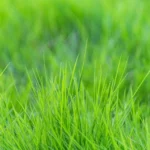
Beetroot is the taproot portion of a beet plant commonly known as beets in Canada and the United States, while the vegetable is known as beetroot in British English and also as table beet, red beet, garden beet, dinner beet or golden beets. Beetroot is cultivated mainly because of its high nutritional value. This plant originates from India, Mediterranean areas and Atlantic coast of Europe.
Packed with essential nutrients, beetroots are a great source of fiber, folate (vitamin B9), manganese, potassium, iron, and vitamin C.
Beetroot develops leafy stem that can grow 39 to 78 inches in height.
Beetroots and beetroot juice have been associated with numerous health benefits, including improved blood flow, lower blood pressure, and increased exercise performance.
Beetroot has heart-shaped leaves. They are usually 2 to 8 inches long in wild plants and much longer in cultivated varieties.
There are numerous types of beetroot, many of which are distinguished by their color — yellow, white, pink, or dark purple.
Most people cultivate beetroot because of its edible root. It develops 55 to 65 days after planting of seed.
Beets mainly consist of water (87%), carbs (8%), and fiber (2–3%).
Root is usually red to purple in color. Unlike other types of vegetables, root contains high quantities of sugar.
Raw or cooked beetroot offers about 8–10% carbohydrates.
Beetroot develops small, green or reddish flowers that appear in dense spikes. Flowers are pollinated by wind.
Beetroots are high in fiber, providing about 2–3 grams in each 3/4-cup (100-gram) raw serving.
Fruit of beetroot is called nutlet. It has hard structure and it is arranged in clusters.
Betanin is the most common pigment in beetroots, responsible for their strong red color.
Beetroot has high nutritional value. Besides high content of sugar, beetroot is rich source of vitamins B6 and B9 and minerals such as iron, magnesium and potassium.
Beetroots and beetroot juice are exceptionally high in nitrates.
Beetroot can be used raw, cooked or pickled. It is often used for salads, soups and as an ingredient of dishes made of meat. Beetroot can be also used for the manufacture of wine.
Up to 10 percent of beetroot is sugar, but it is released slowly into the body, rather than the sudden rush that results from eating chocolate.
Leaves of beetroot are also edible. Fresh leaves taste like spinach.
You can use beetroot juice to measure acidity.
Leaves of beetroot were used for binding of wounds in the ancient Greece. Beetroot was popular “mouth freshener” in the past. It was used to eliminate the smell of garlic. Latest medical experiments showed that beetroot lowers blood pressure and increases endurance in athletes. It also prevents development of liver diseases which result from protein deficiency, diabetes or alcohol abuse.
Since the 16th century, beet juice has been used as a natural red dye. The Victorians used beetroot to dye their hair.
Beetroot juice was used as dye in the past. During the 19th century, women used beetroot for dyeing of hair.
Beetroot can be made into a wine that tastes similar to port.
Betain is a substance isolated from beetroot. It is responsible for the purple color of the root. This substance is used in food industry to improve color and taste of desserts, jams, ice-creams, jellies, tomato sauces and breakfast cereals.
The world’s heaviest beetroot weighed 23.4 kg (51.48 lb.) and was grown by Ian Neale from Somerset in 2001.
Home-made lotion (produced by boiling the beetroot) can be used for the removal of dandruff.
Because beetroot juice helps cleanse the liver, it also helps reduce hangover symptoms.
Juice made of beetroot can be used instead of litmus paper to determine acidity or alkalinity of solution.
Eating raw beets or drinking beet juice helps combat garlic breath.
One drop of beetroot juice changes its color in pink in acid solutions and into yellow in alkaline solution.
Beetroot contains high amount of boron which facilitates production of sex hormones. It was popular aphrodisiac during the Roman time.
Albert Einstein famously hated beets.
Beetroot is biennial plant which means that it finishes its life cycle in two years.
Early American colonists used beets to create pink cake frosting.









